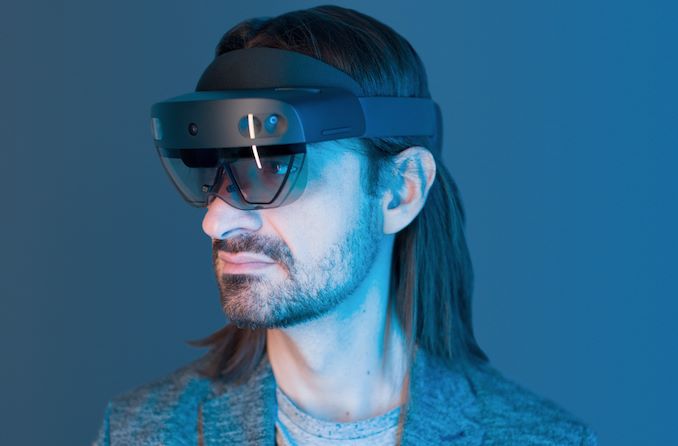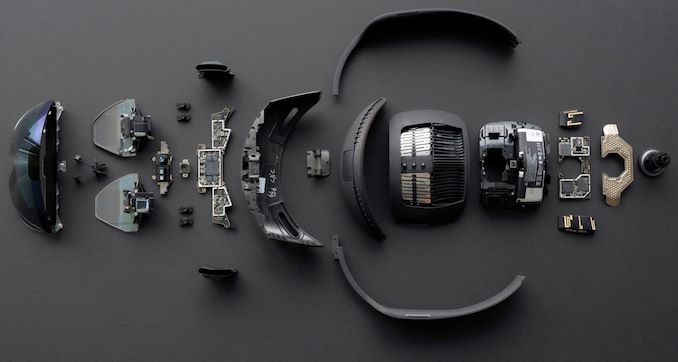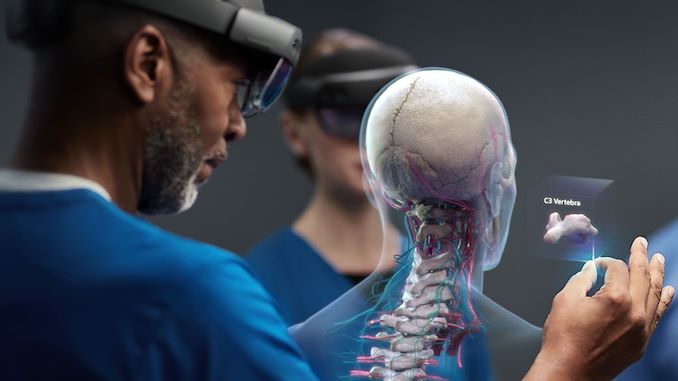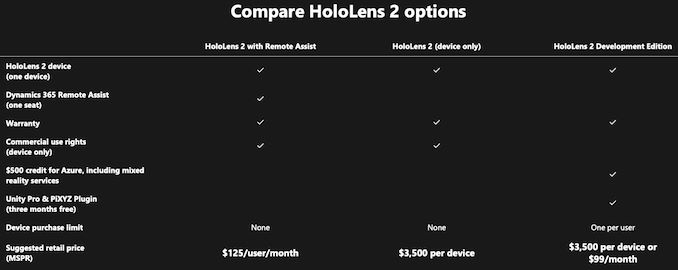Microsoft’s HoloLens 2 Now Available for $3,500
by Anton Shilov on November 11, 2019 10:00 AM EST- Posted in
- IoT
- Peripherals
- Hololens
- Augemented Reality
- AR
- Hololens 2

Microsoft has started sales of its HoloLens 2 mixed reality smart glasses. Aiming to be a significant upgrade over its predecessor in both field and overall performance, the second generation of the company's head-mounted computer is geared primarily towards enterprise organizations, where Microsoft and its partners are continuing to experiment with and develop practical applications for augmented reality in the workplace.
From a tech perspective, Microsoft’s HoloLens 2 isn't a radical departure from the original HoloLens in terms of features and basic design goals, but as a second-generation product Microsoft has put a lot of work into improving the technology and the user experience. HoloLens 2's visual system offers a 52º diagonal field-of-view (up from 34º) with a resolution of 47 pixels per degree on its MEMS display. Under the hood, it is based on Qualcomm’s Snapdragon 850 as well as Microsoft’s custom holographic processing unit (HPU) 2.0 chips, which should offer a drastically higher performance than the previous-generation hardware. Finally, the product features better ergonomics and revamped interaction model with full-blown hand tracking and improved visuals.
As noted above, the HoloLens 2 is still focused primarily on businesses and organizations that can take advantage of the device in their workflows. Microsoft will continue to support the original HoloLens, but customers can now deploy the improved version.
Microsoft offers three options to buy its HoloLens 2. The a stand-alone HoloLens 2 device with Windows 10 Holographic is available from select resellers for $3,500. The HoloLens Development Edition with Windows 10 Holographic, a $500 credit for Azure (including mixed reality services), and Unity Pro & PiXYZ Plugins (with a three-months license) pre-installed can be purchased for $3,500 (or $99 per month). Finally, there is HoloLens 2 with Remote Assist version for enterprises that comes with Windows 10 Holographic and Dynamics 365 Remote Assist that can be had for $125 per user per month.
Related Reading:
- Microsoft at MWC 2019: HoloLens 2 and Azure Kinect
- Hololens Round Two: Augmented Reality At Build 2016
- Microsoft Reveals Additional Details About HoloLens and Begins to Take Pre-Orders
- Intel EOLs Atom Chip Used for Microsoft HoloLens
Sources: Microsoft













22 Comments
View All Comments
jordanclock - Monday, November 11, 2019 - link
I'm very curious to hear what use cases you would have for a HoloLens and how they match up to what the product is intended for.mode_13h - Friday, November 15, 2019 - link
Such a FoV would be *nice*, but it's not necessary for AR. In VR, FoV is needed for immersion (and peripheral vision helps in games).In AR, you're already immersed in the real world. So, FoV is mainly about where you can put useful graphics overlays. Resolution of those graphics is probably more important, since current AR use cases are more likely to involve text and detailed technical schematics.
Finally, keep in mind that this is mobile. You cannot expect it to have the resolution + FoV of a high-end PC setup. You can wish all you like, but you won't get it.